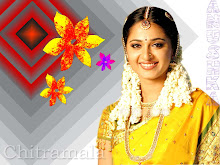

Pronunciation: not-ah-raj-AWS-anna
Definition:
Definition:
Nata means actor or dancer and raja is king. Also called the Cosmic Dancer, Nataraja is another name for Shiva. Natarajasana is depicted in Indian iconography as a graceful figure with one leg lifted in dance, surrounded by a circle of flames. His dance symbolizes cosmic energy in its "five actions:" creation, maintenance, and destruction or re-absorption of the world, concealment of authentic being, and grace. Nataraja, or Shiva as the Cosmic Dancer, destroys and recreates the universe with each step. The Cosmic Dancer symbolizes the constant flow of energy and matter. It represents the destruction of the old self in preparation for the creation of a new one.Natarajasana is a balancing back bend which cultivates openheartedness and helps you uncover your inner radiance. As you stretch your whole body, you develop balance.
Technique:
Technique:
Start in the mountain posture (Tadasana). Feel rooted in your left foot spreading your toes and keeping your weight equally distributed throughout the foot as you bend the right knee conveying all weight onto your left foot. Use your quadriceps muscle in your upper left leg to keep your left kneecap raised throughout the pose. Lift your right heel toward your right buttock as you bend the knee. Turn the right hand palm out with the thumb pointing to the behind you. Gaze at a point on the floor for balance. As you slowly inhale, grasp the right foot up and hold onto the foot or ankle with the right hand. To protect your lower back, try to lift your pubis toward your navel, and at the same time, extend your tailbone toward the floor. Square your hips to the front and slowly bend forward from the top of the left leg.You lift your right foot up, away from the floor, and back, away from your torso. Extend the right thigh behind you aligning it parallel to the floor. Stretch your left arm forward, in front of your torso, parallel to the floor with your fingers pointed forward and your palm facing down. As you do this, look straight ahead gazing at a steady point. The left thigh should be parallel to the floor with the left shin perpendicular to itThe action is having the left arm and leg up so that they form a bow behind the back. Play with the tension. As you extend your leg higher, Your body opens in the backbend and your chest may go toward the floor as part of the opening. Keep it aligned and graceful and hold for some long relaxed breaths. Release the pose, and repeat on the other side.
Beginner’s Tips:
Do the pose in stages and go further as you feel steady, moving onto the next step.Keep the foot that is being lifted flexed so you won’t have cramping in the back of the thigh. If you cannot easily reach your foot, simply use a belt or strap to hold it. If your balance is unsteady, try the pose facing the wall, standing a foot to a foot and a half away from it. Use your forward hand to touch the wall and assist your balance a bit. Don’t depend on the hand against the wall but gently touch it to provide another subtle anchor for your body.
Variation:
Some do the pose with the back extended leg virtually straight and held at the knee by the hand instead of at the foot. Another version, which is much harder. is to reach the arms upward by the ears with the elbows bent and grasp the foot. You can do this with one or both hands. There is a sort of hollow circle made by the arm or arms and the leg and back in this version which is quite beautiful
Benefits;
Great stretch for the shoulders, chest, thighs, groin, and abdomenLegs and ankles are strengthenedBalance improvesOpening to the shoulder and chestVertebral joints learn better performance for the bodyBuilds inner and outer steadinessImbues a psychological lift and opens the heart Contraindications:High or low blood pressureInjury to the legs, hips, low back, knees or shoulders, especially the shoulder capsule.If your shoulder is injured you can adapt by using a strap around the back foot so your shoulder doesn’t open so fully.
